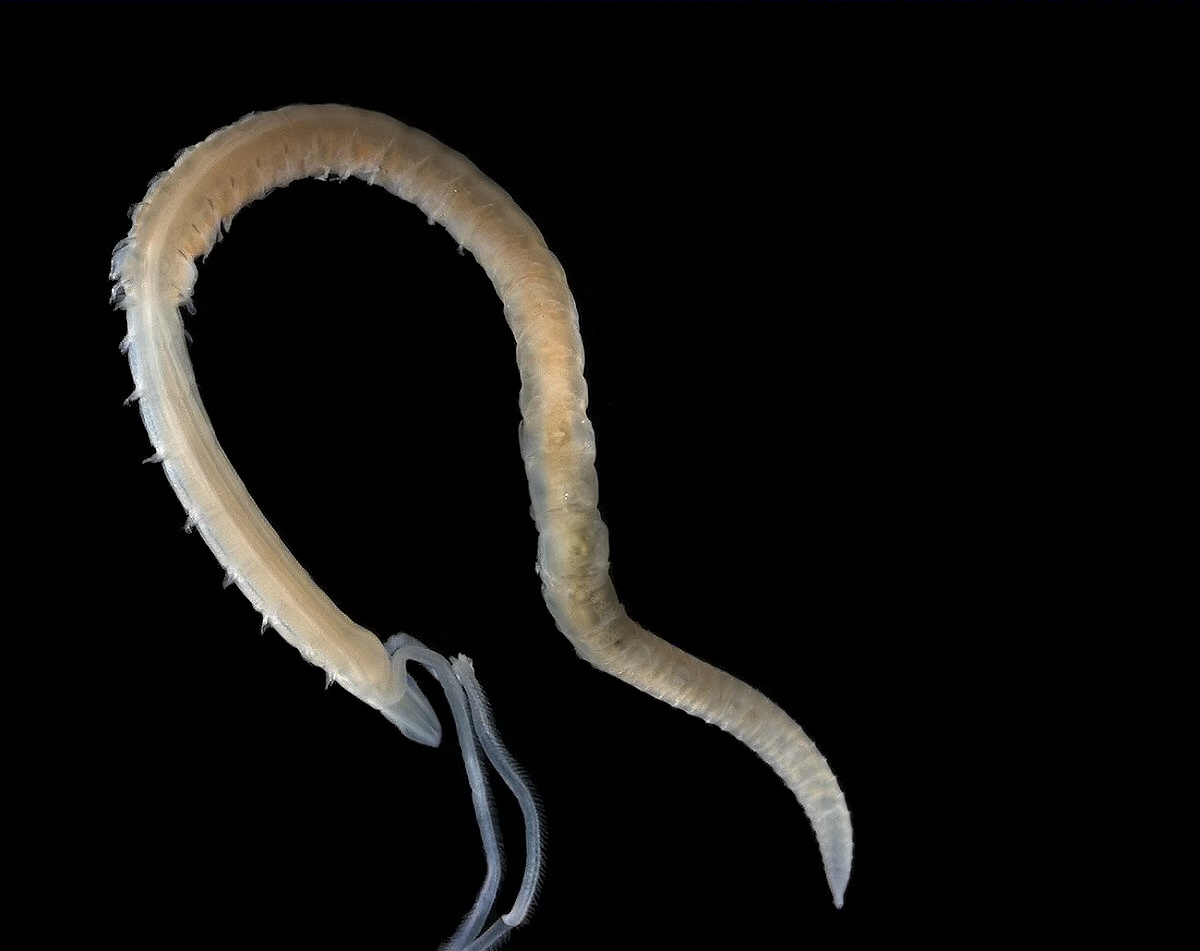©Copyright 2018 GEOSCIENCE RESEARCH INSTITUTE
11060 Campus Street • Loma Linda, California 92350 • 909-558-4548

Hong Chen, LA Parry, J Vinther, Dayou Zhai, Xianguang Hou, Xiaoya Ma. 2020. A Cambrian crown annelid reconciles phylogenomics and the fossil record. Nature (2020). DOI: https://doi.org/10.1038/s41586-020-2384-8.

The annelid worm, Magelona johnstoni, from the same taxonomic family as the Cambrian fossil. Image ©Hans Hillewaert; CC by SA 4.0; Wikimedia Commons.
Summary. Annelids are segmented worms, such as earthworms and abundant marine worms known as polychaetes. Several fossil annelids have been found in Cambrian sediments, but they differ in morphology from living species. Within the evolutionary geological time scale, the Cambrian is the period of time between 541 and 485 million years ago. Phylogenetic studies have indicated that the ancestral annelids might have been tube-dwellers living within seafloor sediments, but known Cambrian annelids are interpreted as mobile worms that lived on the seafloor surface. This discrepancy is resolved with the discovery of a tube-dwelling Cambrian annelid in Kunming Province, China. The newly discovered fossil has specialized morphological traits in common with living annelids in the family Magelonidae, and is assigned to that family. This is the oldest known fossil that clearly belongs to any living group of annelids.
Comment. This is an interesting discovery for at least two reasons. One reason is that the Cambrian fossil is assigned to a living family. Considered from a long-age viewpoint, it is remarkable that the amount of “change” in these worms from Cambrian to Recent is small enough to be accommodated within a single family. The supposed geological time involved here would be about 540 million years. If this were true, we would expect to see some significant morphological change in such a long time. This is an example of morphological stasis at the level of variation that characterize a family. It does not show development of a new type of organism, hence does not qualify as evolution, as ordinarily defined. The new fossil is significant also because it illustrates how a single discovery can change the interpretation of other fossils. In the evolutionary paradigm, fossils in lower layers are generally assumed to be ancestral to fossils in upper layers. If a newly discovered fossil is a better fit with the evolutionary expectations, the other fossils will be re-interpreted as evolutionary side branches, or dead-ends, rather than ancestors. This process is understandable if one is committed to an evolutionary worldview, but it underlines the frequent weakness and conjectural basis of proposed evolutionary relationships. The fact that many fossils do not fit within living groups may be an indication that the original creation included greater diversity than what we observe in the present world. The fossil record, then, is the partial record of the life forms that existed after creation and the Fall, and not the record of evolutionary transitions.
Jim Gibson, PhD
Geoscience Research Institute